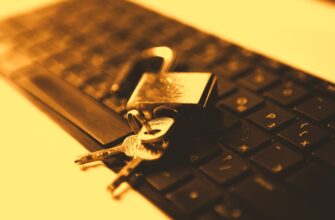- Why Crypto Anonymity Matters More Than Ever
- Understanding KYC-Free Wallet Fundamentals
- Step-by-Step Wallet Anonymization Process
- Phase 1: Acquire Crypto Anonymously
- Phase 2: Set Up Your Anonymous Wallet
- Phase 3: Enhance Transaction Privacy
- Critical Anonymity Best Practices
- Risks and Legal Considerations
- FAQ: Anonymous Crypto Wallets Explained
- Q: Is it legal to use non-KYC crypto wallets?
- Q: Can I convert Bitcoin to anonymous coins easily?
- Q: Do hardware wallets enhance anonymity?
- Q: How anonymous are “privacy wallets” like Samourai?
- Q: Can exchanges trace my anonymous wallet?
- Q: What’s the biggest anonymity mistake beginners make?
Why Crypto Anonymity Matters More Than Ever
In today’s digital age, financial privacy is a fundamental right. For cryptocurrency beginners, anonymizing your wallet without KYC (Know Your Customer) verification protects you from data breaches, targeted hacks, and unnecessary surveillance. While KYC-compliant exchanges serve legitimate purposes, non-custodial solutions put you in control of your financial sovereignty. This guide demystifies wallet anonymization using beginner-friendly methods that prioritize security and privacy.
Understanding KYC-Free Wallet Fundamentals
KYC requires identity verification through documents like passports or IDs. To bypass this:
- Non-custodial wallets are self-hosted tools where you control private keys
- Privacy coins like Monero or Zcash obscure transaction details by default
- Decentralized exchanges (DEXs) enable trading without ID submission
- Peer-to-peer (P2P) platforms facilitate direct crypto purchases
Step-by-Step Wallet Anonymization Process
Phase 1: Acquire Crypto Anonymously
- P2P Marketplaces: Use LocalCryptos or Bisq to buy crypto with cash or gift cards
- Bitcoin ATMs: Select machines with “No ID Required” options (limits apply)
- Crypto Faucets/Earnings: Earn small amounts via Brave browser or learning platforms
Phase 2: Set Up Your Anonymous Wallet
- Download a non-custodial wallet like Exodus or Atomic Wallet
- Generate wallet offline; write recovery phrase on paper (never digital)
- Enable all privacy features (e.g., coin control in Electrum)
Phase 3: Enhance Transaction Privacy
- Use CoinJoin services (Wasabi/Whirlpool) to mix coins
- Convert to privacy coins via decentralized swaps
- Route transactions through Tor or VPNs
Critical Anonymity Best Practices
- 🔒 Never reuse wallet addresses – generate new ones per transaction
- 🌐 Always use VPNs when accessing wallets
- 📲 Separate devices for trading vs. storage
- 💡 Regularly update software to patch vulnerabilities
- 🚫 Avoid linking to identifiable accounts or IPs
Risks and Legal Considerations
While wallet anonymization is legal in most jurisdictions, remember:
- Tax obligations still apply to cryptocurrency gains
- Scams target privacy seekers – verify all tools/services
- Some mixing services may be restricted in your region
- Balance privacy with convenience; full anonymity requires diligence
FAQ: Anonymous Crypto Wallets Explained
Q: Is it legal to use non-KYC crypto wallets?
A: Yes, self-custody wallets are legal globally. Compliance with tax regulations remains mandatory.
Q: Can I convert Bitcoin to anonymous coins easily?
A: Absolutely. Use DEXs like Uniswap or ThorSwap to exchange BTC for XMR/ZEC without ID.
Q: Do hardware wallets enhance anonymity?
A: Yes. Devices like Ledger or Trezor provide air-gapped security but don’t automatically anonymize – combine with privacy protocols.
Q: How anonymous are “privacy wallets” like Samourai?
A> They implement advanced features (Ricochet, Whirlpool) but still require careful usage to avoid metadata leaks.
Q: Can exchanges trace my anonymous wallet?
A: If you withdraw from KYC exchanges to a new wallet, they can track initial transactions. Use intermediate privacy steps.
Q: What’s the biggest anonymity mistake beginners make?
A: Connecting wallets to public Wi-Fi or linking to identifiable email/phone numbers.
Mastering wallet anonymization empowers you to navigate crypto securely. Start small, prioritize education over large transactions, and remember: true financial freedom begins with taking control of your digital footprint.








